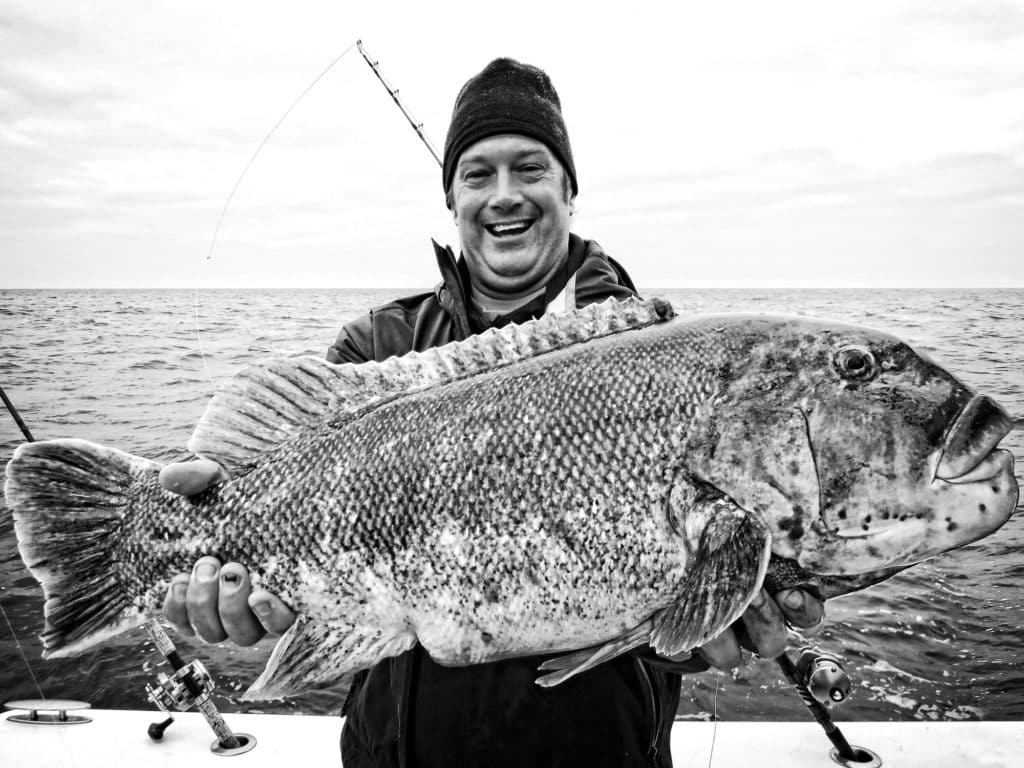
Over the past two years, something happened to tautog along the mid-Atlantic and Northeast coasts. They’ve gotten huge!
Any tautog over the 10-pound mark is generally considered a lifetime fish. Yet during a blustery December day, Capt. Al Crudele, Sean Reilly and I were fishing for blackfish on Bayhound, anchored over an old wooden wreck 8 miles off the Jersey coast in 60 feet of water reading 48 degrees F, when I decked my largest tautog ever: 13.5 pounds. Reilly landed a 12.9-pound tog, and on the next drop, Crudele came up with a 12.7-pounder. That kind of luck is unheard of. Or is it?
The previous tautog world record of 25 pounds stood from 1998 to 2014. Then, in 2015, four long-standing state records and the world record were not only broken but smashed with authority. Thien Nguyen landed a 26.9-pound Connecticut tog, Bill Taylor’s New York tog weighed 22.53 pounds, and Capt. Tom Daffin’s New Jersey fish was a 25.4-pounder, but all were eclipsed by a new world record and Maryland state record: a 28.8-pound beast caught by Kenneth Westerfield. Are we seeing a year class of fish maturing to biblical proportions? And more importantly, how do you find them?
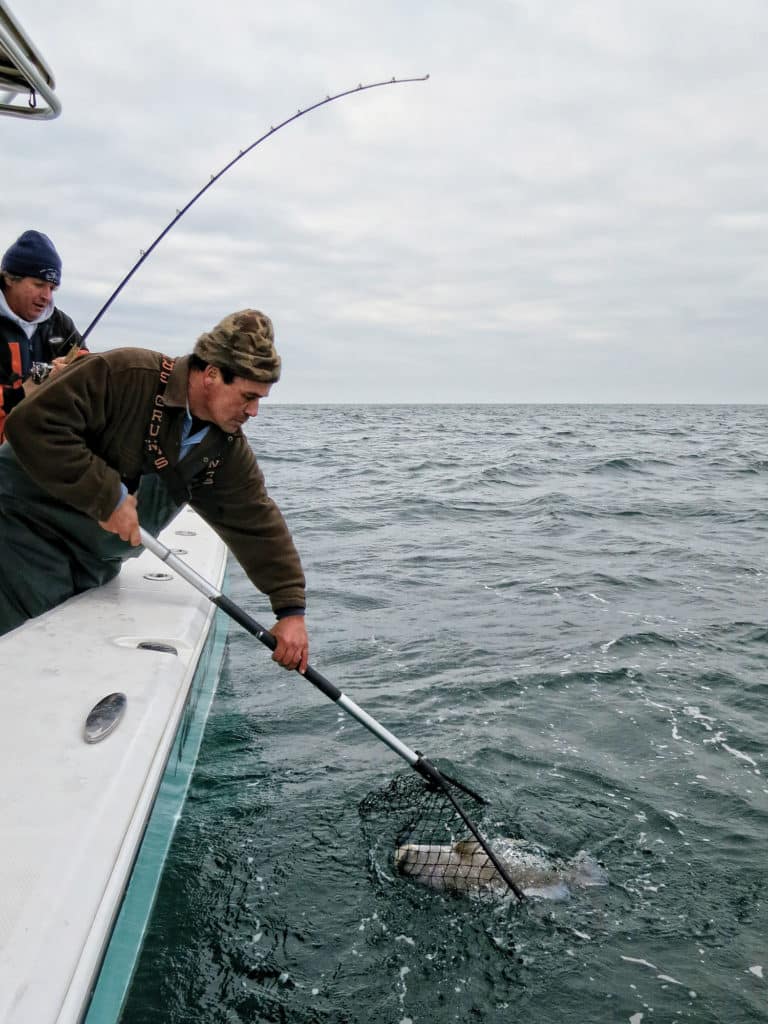
MOVING TARGETS
That spring day in April 2015 when Daffin landed his New Jersey state record, the 25-pounder wasn’t alone. “We had six other fish that weighed between 11 and 16 pounds. And the two previous trips, we landed two 18-pounders,” Daffin says. “We also had another one on that was pulling 35 pounds of drag with two thumbs on the spool until the rod simply snapped. That tog had to be 30, maybe 40 pounds.” That’s proof that the larger tog may actually hang together in size classes.
Optimal water conditions are clean and clear, with temps from 41 to 55 degrees, the sweet spot being the 48- to 52-degree range. And from November to January, Daffin starts out at the 60- to 90-foot-depth wrecks, but he works outward in 20-foot intervals to 200 feet to find the bite as winter sets in. “Tog are the Canada geese of the ocean, since there are migratory and nonmigratory fish. Migratory tog are lean and clean. The short, stocky and fat fish with wreck rust are the residents,” Daffin explains. Both grow to epic proportions. Come springtime, the migratory pattern is reversed. Prime depths with the right water temperature are around 100 to 140 feet, but get shallower as March runs into April.
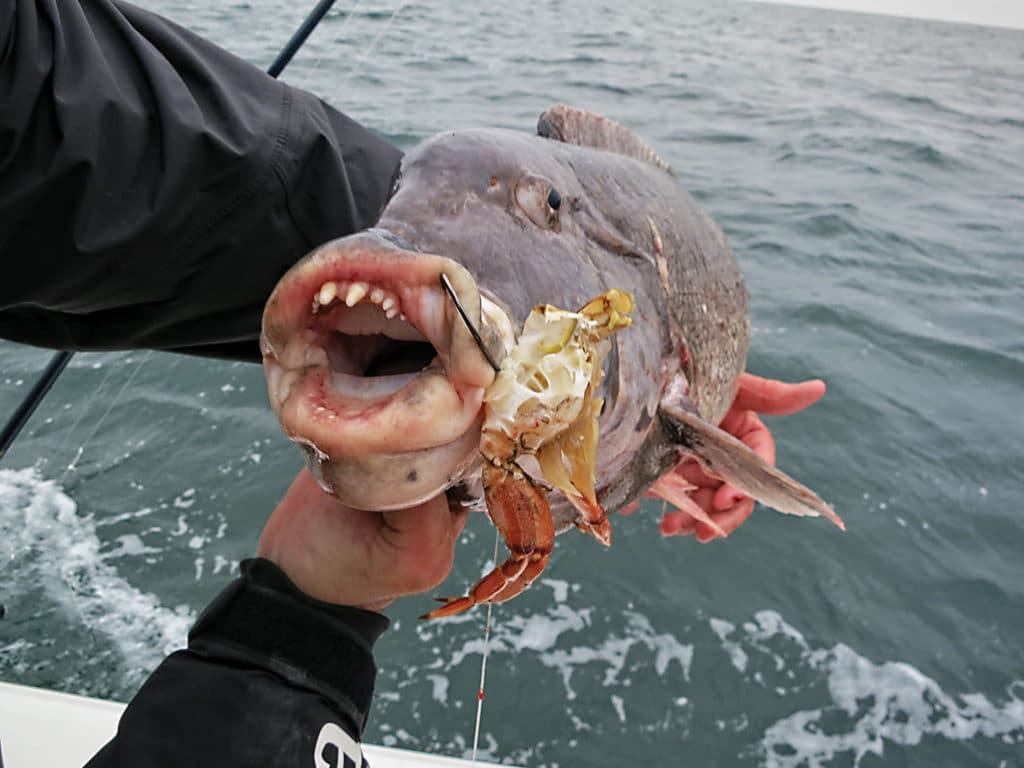
HOME TURF
While serious toggers swear by old, low-profile wooden wrecks for trophies, that standard doesn’t always hold true. “High-profile wrecks, low-lying fields of debris around wrecks and piles of rock and rubble, also hold big fish,” Daffin says. “That rod-breaking tog we hooked was 25 feet up over a wreck.”
Crudele picks out small pieces of rubble and works them fastidiously, often focusing on small sections of cut pipe, toilet-bowl dumps, lost anchors, or any bit of real estate that is not commonly fished and has years of marine growth on it. “Big blackfish won’t necessarily use a small spot like that to hide, but they definitely hang around it to gorge on the decades’ accumulation of barnacles, anemones and mussels,” he says. Though large fish root in structure, many times bulldogs patrol the edges of the structure. The drop-off from a barge or ship hull also offers shadowy cover that togs use to hide and ambush prey. If you feel your sinker drop off from hard to soft bottom, be prepared for a punishing hit.
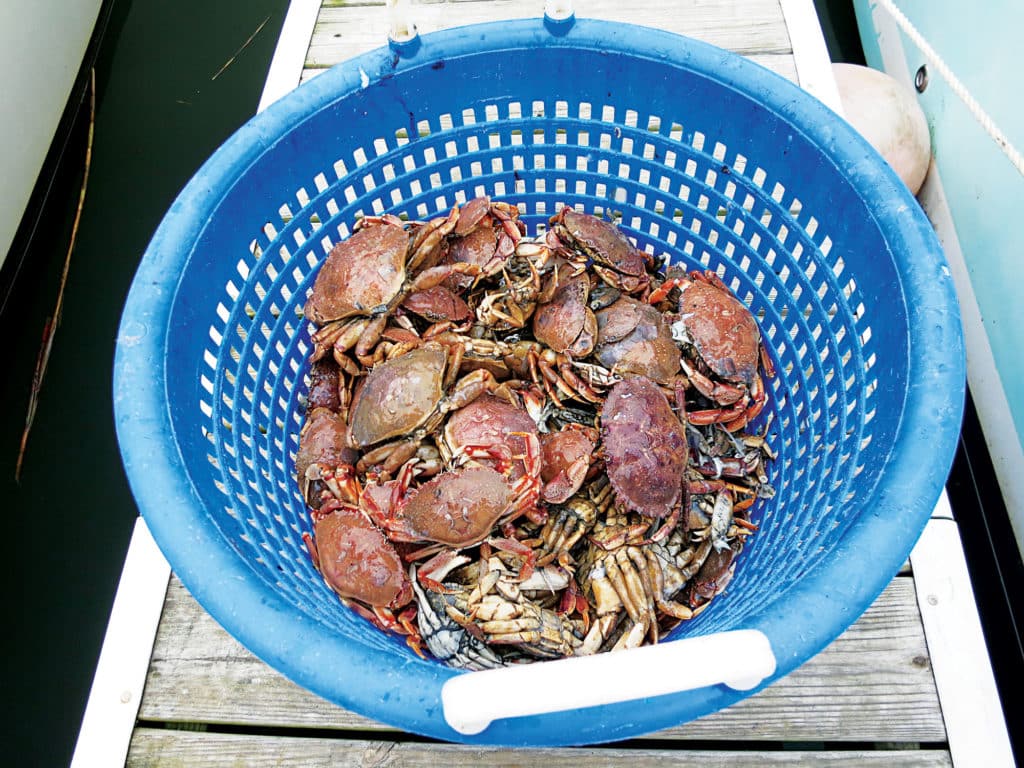
STRIKE MANAGEMENT
Two styles predominate when talking about titanic tog hits. First, there’s the scratch followed by a heavy thump or two with the sinker walking off. “You can feel the sinker actually coming off the bottom and the tog taking it away, the rod bouncing up and down 2 or 3 inches,” Daffin says. Other times, the hits are brutal from the get-go. “When we drop a whole white legger crab, a big tog punches it hard first,” Crudele says. “That first punch will shake your knees. Let him eat it, then set the hook when he comes back to clean it up.”
Daffin also recommends weeding out smaller fish by using silver-dollar-size white leggers and large soup crabs, though double-digit tog also have a hankering for whole 1½-inch green crabs. Anglers need to buckle up for the battle against a record-breaking tog. Daffin says: “On low-profile wrecks and debris fields 1 to 3 feet high, you can go with a one-third drag and let the fish take some line, since he will not be able to sneak into a cranny and cut you off. On high-profile wrecks with a lot of jagged debris, lock down the drag with pliers and winch ’em up before he wraps the line and cuts you off.”
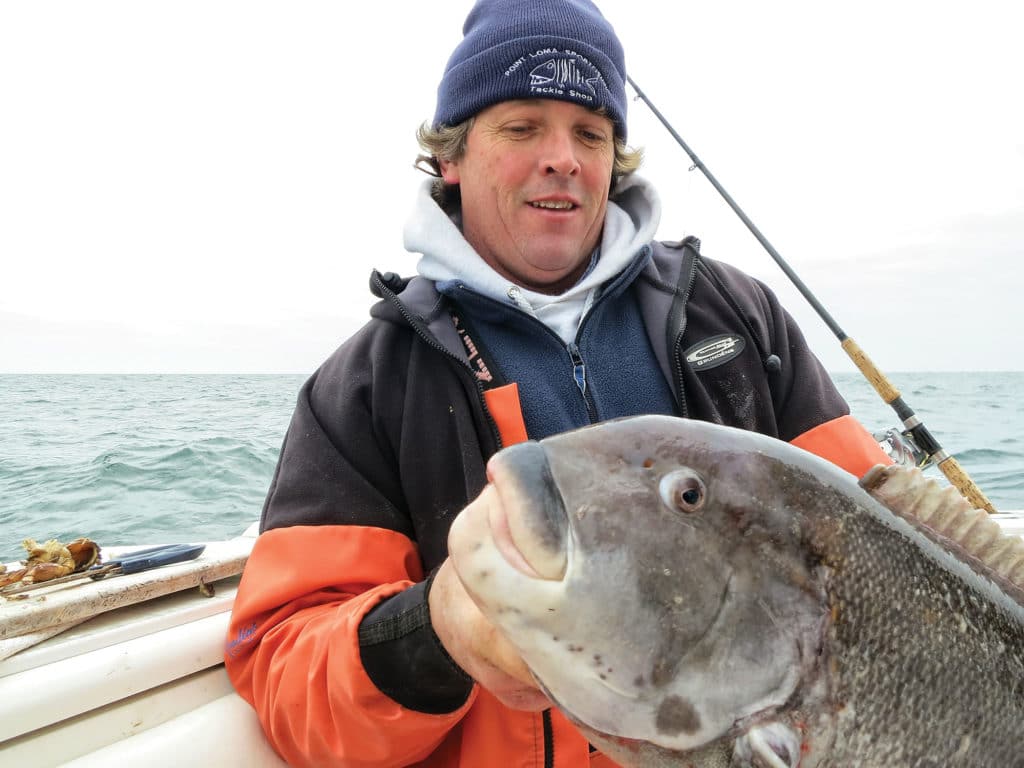
GAME PLAN
With any fish, there is a 10-foot buffer zone you need to clear after the hit. Set the hook, keep the rod tip high to pull the fish off the structure, and reel fast on the first three to four cranks to get the fish away from the wreck. That quick reeling buffer is a fine line between a fish breaking you off or you pulling it up and out of danger. If while fishing a metal structure, you happen to break off a big tog and it takes your sinker, you might as well pick up anchor and move, says Crudele. “That big tog will be banging that sinker all around the wreck and completely shut down the bite for big and small fish,” he says. “Cut your losses and find another spot.”
Double-digit tautog catches are on the rise, and not just 10- to 14-pounders, but also fish pushing the 20-pound mark. Tautog records that held for decades are falling steadily, and I fully expect to see the first-ever 30-pounder taken on rod and reel in the next year or two. Just remember that Tautog are one of the slowest-growing fish species in the ocean. A 20-pound fish could be well over 40 years old, and any fish over 10 pounds is generally thought to be 15 to 30 years old. So keep a camera and scale handy, get the picture and weight quickly, and release the big beasts.
SWS Planner
Mid-Atlantic and Northeast Tautog
What: Trophy-size tautog, also known as blackfish
Where: Northeast and mid-Atlantic shipwrecks, reefs and rock piles, 5 to 30 miles out
When: Fall, winter and spring
Who: A reliable set of wreck coordinates are invaluable in tautog fishing. Until you have yours, count on the pros to put you on fish:
Cape May Capt. Tom Daffin, Fishin’ Fever 609-868-6014 fishinfeversportfishing.com
Atlantic City Capt. Al Crudele, Bayhound Charters 609-602-2662
SWS Tackle Box
Mid-Atlantic and Northeast Tautog
Rods: 7- to 8-foot conventional, 30- to 50-pound class, with moderate to fast action and moderate flex at the tip
Reels: Conventional with fast 6:1 retrieve ratio, such as the Shimano Torium 20 and Avet MXL
Line: 50- to 65-pound braid and 10 feet of 60-pound mono top shot
**Lures: **1⁄2- to 3⁄4-ounce Tidaltails jigs
Terminal Tackle: 5- to 12-ounce bank sinkers, 60- to 80-pound fluoro leader, 5/0 Gamakatsu Octopus hooks, No. 2 Virginia hooks









